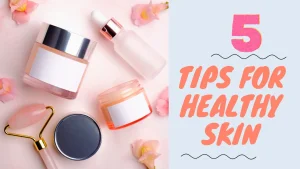
Right Moisturizer for your skin
Selecting the right moisturizer for your skin is a crucial step in maintaining healthy, well-hydrated skin. With a multitude of options available in the market, choosing the right one can be a daunting task. However, by following a systematic approach, you can streamline the process and ensure that the moisturizer you choose is tailored to your skin’s unique needs. In this comprehensive guide, we will explore the four essential steps to help you make an informed decision and find the right moisturizer that’s best suited for you.
Step 1: Understand Your Skin Type
The first and most fundamental step in selecting the right moisturizer is understanding your skin type. Your skin type serves as the foundation upon which your entire skincare routine is built. There are generally four primary skin types: dry, oily, combination, and normal. Let’s take a closer look at each:
Dry Skin: If your skin often feels tight, appears flaky, or rough to the touch, you likely have dry skin. Dry skin can be caused by various factors, including genetics, climate, and lifestyle.
Oily Skin: Oily skin is characterized by a shiny appearance, especially in the T-zone (forehead, nose, and chin). Enlarged pores and a predisposition to acne are common characteristics of oily skin.
Combination Skin: Combination skin combines elements of both dry and oily skin. This means that certain areas of your face might be dry, while others are oily. The T-zone is typically oilier, while the cheeks may be drier.
Normal Skin: Normal skin is often considered the ideal skin type. It’s well-balanced, not too oily or dry, and generally free from significant imperfections.
To determine your skin type, pay attention to how your skin feels and looks throughout the day. Does it feel tight and flaky, especially after cleansing? Or does it tend to become shiny, particularly in the T-zone? By understanding your skin type, you can start to narrow down your moisturizer options to those that are specifically formulated for your skin’s unique needs.
Step 2: Consider Your Skin Concerns
In addition to your skin type, it’s crucial to consider any specific skin concerns or goals you may have. These concerns can vary widely from person to person and may include:
Sensitivity: If your skin is prone to redness, irritation, or allergies, you’ll want to opt for a moisturizer that’s hypoallergenic and free of potential irritants. Look for labels that indicate suitability for sensitive skin.
Aging: If you’re concerned about the signs of aging, such as fine lines and wrinkles, you’ll want a moisturizer that contains anti-aging ingredients. Common ingredients to look for include hyaluronic acid, retinol, and peptides.
Acne-Prone Skin: If you struggle with acne, you’ll want to choose a non-comedogenic moisturizer. Non-comedogenic products are formulated not to clog pores, reducing the risk of breakouts.
Hyperpigmentation: For those dealing with issues like dark spots or uneven skin tone, a moisturizer with ingredients like niacinamide or vitamin C can be beneficial.
By identifying your specific skin concerns, you can select a moisturizer that not only addresses your primary needs but also enhances the overall health and appearance of your skin.
Step 3: Examine the Ingredients
Once you have a clear understanding of your skin type and concerns, it’s time to dive into the ingredient list of potential moisturizers. The ingredients in a product can make a significant difference in how it will perform on your skin. Here are some key ingredients to look for in a good moisturizer:
Hyaluronic Acid: Hyaluronic acid is an excellent hydrating ingredient. It’s capable of holding up to 1,000 times its weight in water, making it highly effective in plumping and moisturizing the skin.
Ceramides: Ceramides are essential lipids that help to maintain the skin’s natural barrier. They lock in moisture, prevent water loss, and contribute to a healthy, well-hydrated complexion.
Glycerin: Glycerin is a powerful humectant, which means it draws water from the environment into your skin, helping to keep it hydrated and supple.
Dimethicone: Dimethicone is a silicone-based ingredient that forms a protective barrier on the skin’s surface. This barrier helps to lock in moisture and protect the skin from external irritants.
SPF: If you’re looking for a daytime moisturizer, consider one that includes sun protection. Protecting your skin from harmful UV rays is a vital part of any skincare routine.
On the flip side, it’s also essential to identify ingredients that may not be suitable for your skin. Look out for potential irritants, fragrances, and alcohol, which can cause sensitivity or exacerbate existing skin issues. Be sure to research and understand any unfamiliar ingredients to ensure they align with your skincare goals.
Step 4: Test and Monitor
Before committing to a new moisturizer, it’s advisable to perform a patch test and monitor how your skin reacts to the product. Here’s how you can do it:
Patch Test: Apply a small amount of the moisturizer to a discreet area of your skin, such as behind your ear or on your forearm. Make sure to choose an area that is typically sensitive, as this will help you gauge how your skin reacts.
Monitor for Sensitivity: Over the next 24 to 48 hours, observe your skin for any signs of sensitivity, redness, itching, or irritation. If you experience any adverse reactions during this period, it’s best to discontinue use of the product.
Gradual Introduction: If your patch test is successful and you experience no negative reactions, you can start incorporating the moisturizer into your daily skincare routine. Begin by using it once a day, and gradually increase the frequency as your skin adapts.
Keep in mind that individual skin sensitivities and preferences can vary, so what works for one person may not work for another. It may take some trial and error to find the perfect moisturizer that suits your skin type and addresses your specific needs. Don’t be discouraged if you don’t find the right one immediately; finding the ideal moisturizer is part of the skincare journey, and it’s worth the effort to ensure your skin remains healthy and radiant.
In conclusion, selecting the right moisturizer is a personalized process that involves understanding your skin type, considering your specific skin concerns, examining the ingredients, and testing the product on a small area of your skin. By following these four steps, you can make a well-informed decision that will contribute to the overall health and appearance of your skin. Remember that your skin’s needs may change over time, so it’s a good practice to reevaluate your moisturizer choice periodically to ensure it continues to meet your evolving skincare needs.












